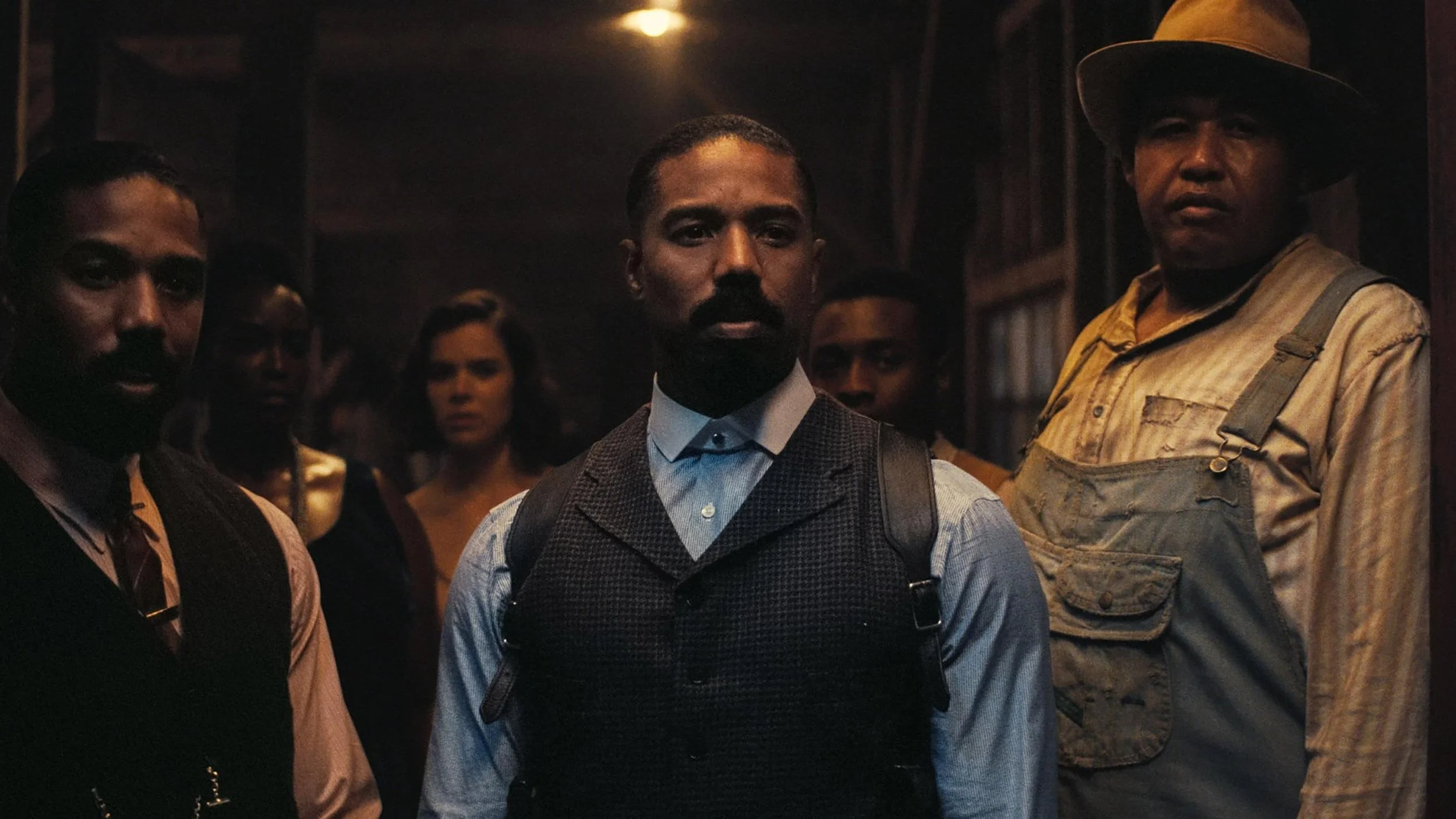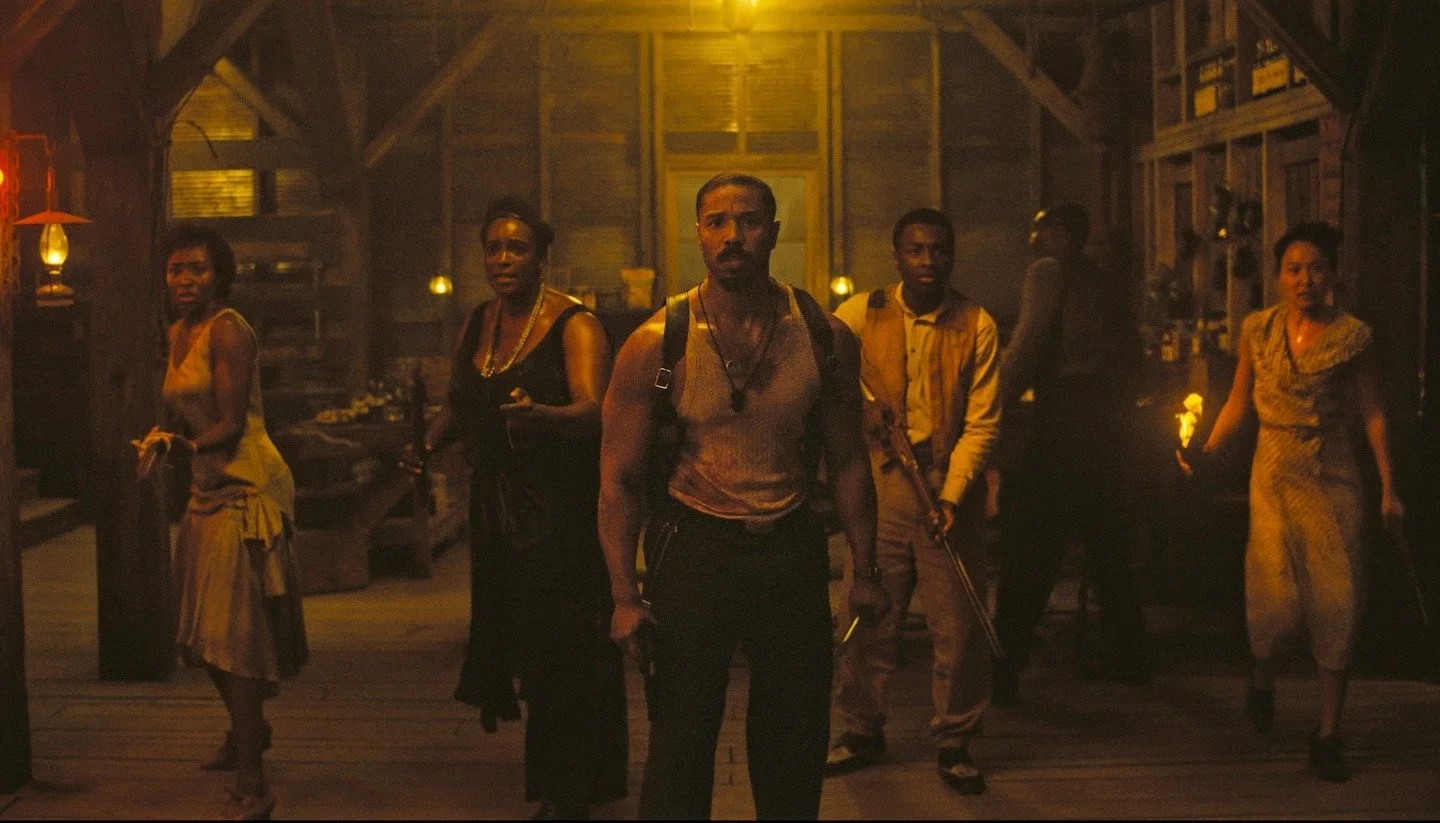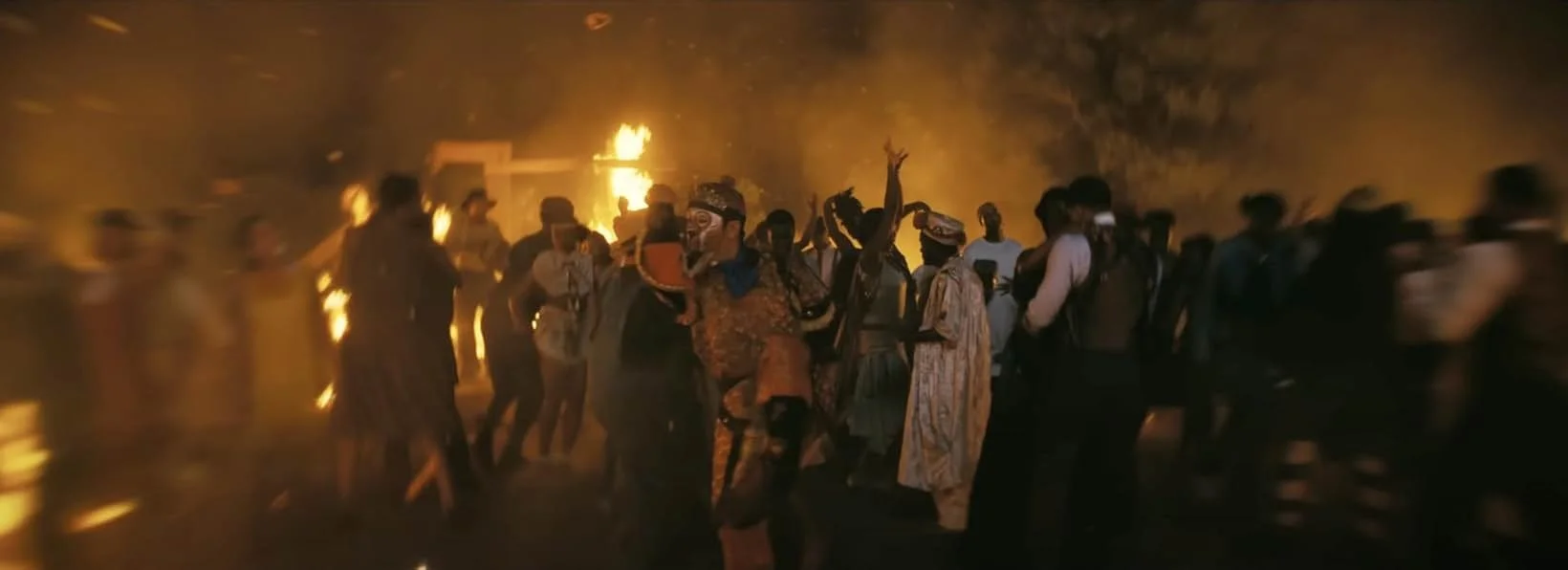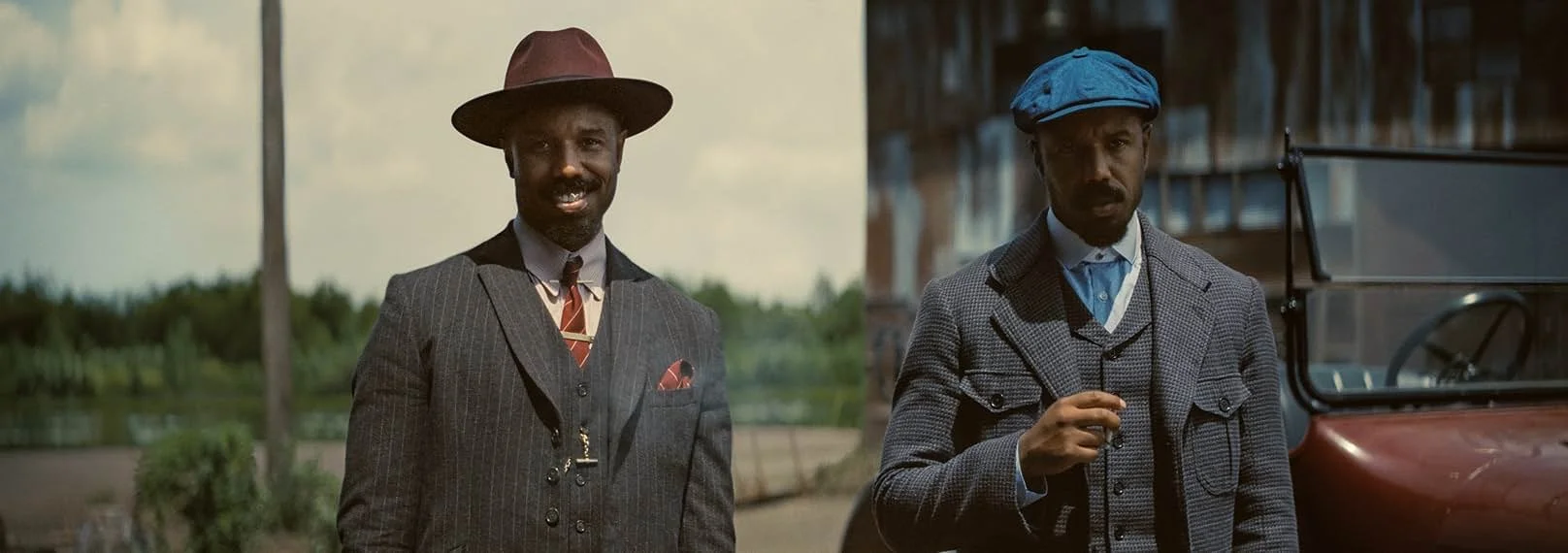Sinners: An Art Director’s Review
In today’s world—especially with social media—there’s sometimes a stigma I know some artists feel: like you can’t show love or be inspired by another artist, especially when they’re in the same lane as you. It’s kind of crazy, honestly. You get nothing out of that except a missed opportunity to express admiration—when in reality, I think that kind of openness brings you closer to your own work. It deepens your connection to what we all do.
Which brings me to this post—a review of the newly acclaimed film Sinners, directed by Ryan Coogler and starring Michael B. Jordan. But it’s not your typical review. Not Roger & Ebert. Not Rotten Tomatoes. This is me, my perspective as an Art & Creative Director, and how I viewed it—not just as a moviegoer, but through the lens of someone who creates visuals, tells stories, and builds worlds of their own. I’m not going to give you a plot breakdown you can find anywhere else. I’m sharing what stood out to me, and how it reflects back on how I think, create, and approach my own work.
If you know me, you know that when it comes to creative direction, the medium that’s always fueled me is film. It’s the holy grail of inspiration. Everything from analyzing movie trailers on YouTube to catching two, three movies a week with my AMC membership. My love for film goes way back to childhood—I’ll save that story for another time—but it continues to shape the way I approach campaigns, brand storytelling, design, everything. I’ve always believed that a still image should feel like a paused moment in a film. That’s when you know you’ve created something special. That’s what I strive for.
Now Sinners…where do I start?
This was one of those films that, from the very first trailer over six months ago, I knew would be one of those movies. The kind that leaves an imprint. It’s already reinvigorated the movie community, getting people back into theaters like the old days. That alone has been amazing to witness. And as someone who never let that part of life fade, even in the height of the streaming—when most movies are in IMAX or Dolby Cinema for about four days and then gone—I felt it deeply. I’ve already seen Sinners twice, once in IMAX 70MM at Lincoln Square, and again in standard IMAX. Both were incredible experiences for someone like me, who truly loves the art form.
There’s so many layers to the movie that I don’t think one post can do it justice, so I’ll just walk through a few of my favorite aspects that really stuck with me—and more importantly, how they connect back to how I approach my own creative process.
First, the cinematography. Let’s just start there. Every frame was filled with beauty—the lighting, the composition, the color grading, the environment. It was all executed with intention. Huge credit to Ryan Coogler, Autumn Durald Arkapaw, and the whole team. The atmosphere they created in the deep Delta South completely immersed you in the world. You could feel the sun, the landscape, the fabric of the environment. It was a masterclass in building a mood.
And it being shot on film couldn’t have done it more justice. Film is my favorite medium for anything I create. The texture and feeling it brings are unmatched. Even when I’m working digitally, I try to process and grade it in a way that feels reminiscent of film. It’s something I focus on in my work because I believe it’s what brings that emotional richness, that timelessness, that weight to the image.
Sinners was shot simultaneously on Panavision 70 and IMAX film—the first time a film has been shot using both formats. In layman’s terms, that means two different film stocks, each with their own aspect ratio were used throughout the movie. The result? Certain scenes would shift aspect ratios mid-story, enhancing the emotional impact of key moments. Not just a cool visual trick, but a real, intentional use of format to create a deeper experience.
And to me, that’s everything. That mindset—of making something not just beautiful but technically considered—is something I bring to my work as well. When you can create with both a technical and poetic mindset, you’re not just chasing aesthetics. You’re thinking about how it’s going to hit—how it will feel once it’s out in the world. That’s how you make something that lasts. Something that resonates. That balance between craft and emotion is what creates truly beautiful work.
IMAX Film & Ultra Panavision 70, courtesy of Kodak & Warner Brothers
Another moment that stood out to me: the Juke Joint scene. Where Sammie (played by Miles Caton) performs for the first time in front of the crowd and commands everyone's attention. Yes, it was visually stunning—but what made it hit harder for me was knowing the preparation it took to film that scene, perfectly choreographed and in sync. And I know how long preparation like that can take when you’re trying to get a vision just right. As a visual director, when you see it in your mind, you’ll do whatever it takes to make it happen—no matter how tedious, how specific, how obsessive it might feel to others.
But beyond the technical aspects, the concept of the scene itself was brilliant. It seamlessly brought together the musical history of African Americans—from early African roots and instruments to beatboxing, DJing, and West Coast LA rap. It visually illustrated a timeline of influence that we all know, but rarely get to see shown this overtly and poetically on such a large stage.
This scene was definitely reminiscent of Ernie Barnes’ iconic 1971 painting The Sugar Shack—a crowd of joyful Black dancers in a packed music hall in mid-century segregated North Carolina. Barnes was born in 1938 in Durham, NC at the height of Jim Crow, and his work embodied that aspect of resilience in Black culture. The film felt like a live tribute to that tradition.
“The vivid image, with its dynamic, elongated figures dominating the packed space of a dance floor and illuminated by a cone of light from a single bulb, reflects what became known as the Black Romantic tradition.”
— Museum of Fine Arts, HoustonAnd that’s exactly what this scene captured: a vibrant, romantic, layered expression of Black culture—both its past and its present.
Ernie Barnes’, “The Sugar Shack”, 1971
Lastly, the thing that lingered with me most was the film’s foundational theme: the duality of life. As an artist, I often find myself navigating those same internal contrasts—light and dark, softness and sharpness, chaos and order.
Sinners immersed you in a world where heaven and hell, love and hatred, beauty and violence all existed simultaneously. And through the characters of twin brothers Smoke and Stack, you saw personalities that were both cold and deeply loving. Scarred but protective. Violent, but loyal. Ryan and the team found a way to translate that level of emotional complexity in a way that was visual, poetic, and human. As their childhood stories unfolded throughout the movie, it gave you clarity. You understood the “why” behind who they were, and whether you agreed with it or not, you felt it.
Smoke & Stack from the movie
One of the most impactful moments of this to me, was in the post-credit bonus scene (spoiler alert). We see an older Sammie who’s now in Chicago running his jazz club, when Stack and Mary show up—almost 60 years later. I thought, like most movies with a setup like that, it was going to end badly for old Sammie. But instead, it ended in the most unexpected and emotionally unique way.
He asks Stack if that night all those years ago meant anything to him. Stack tells him that it did. That he made a promise to his twin brother Smoke to let Sammie live, to keep him safe, to let him have something good in what was left of life. And that for Stack, that night was the last time he saw the sunset, the last time he saw his brother, and the last time he felt free.
That might just sound like a regular story—but it stood out to me as much more. Even as a vampire—something feared and monstrous—he still had memory, pain, love, loyalty. Sinners could’ve easily gone the route of being a typical horror flick filled with gore and no depth. But instead, it chose to explore something more complicated: the balance of light and dark. Cinematically and poetically, it couldn’t have been executed more beautifully.
In all, Sinners was top-tier for me. One—as a regular moviegoer. And two—as a creative who creates and directs with film as a constant reference point. I’m excited to see what comes next. Maybe a series, maybe a spinoff. Who knows.
But what I do know is that being able to enjoy someone else’s work, especially something this good, is essential. As artists, if we only sit with our own ideas and don’t expose ourselves to others’ work, we’re doing a disservice to the process. The process requires input. Watch movies. Read books. Visit exhibits. Take it all in. That’s how you stay inspired. That’s how you stay sharp. And most importantly, that’s how you create. Hope you enjoyed my first movie review.














